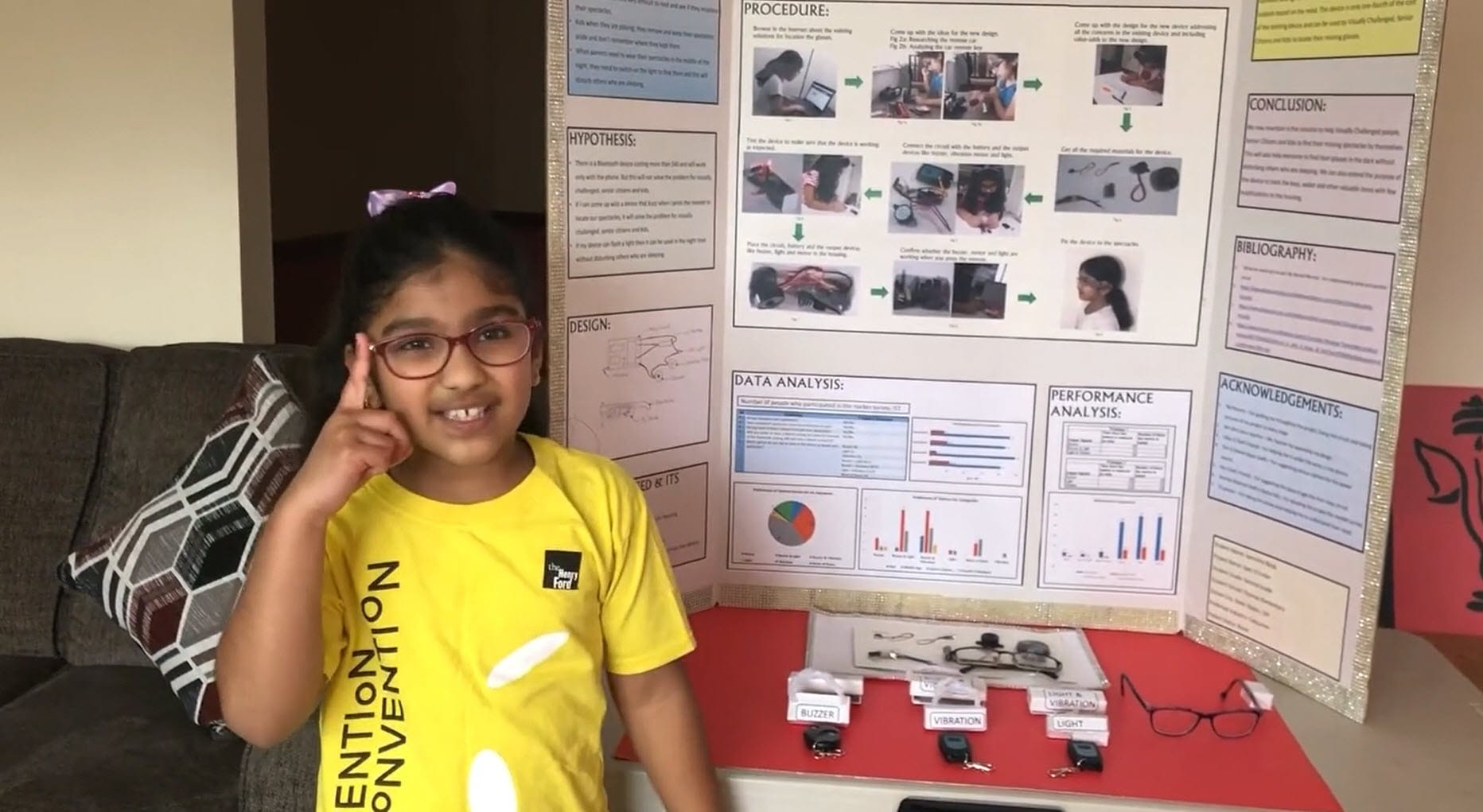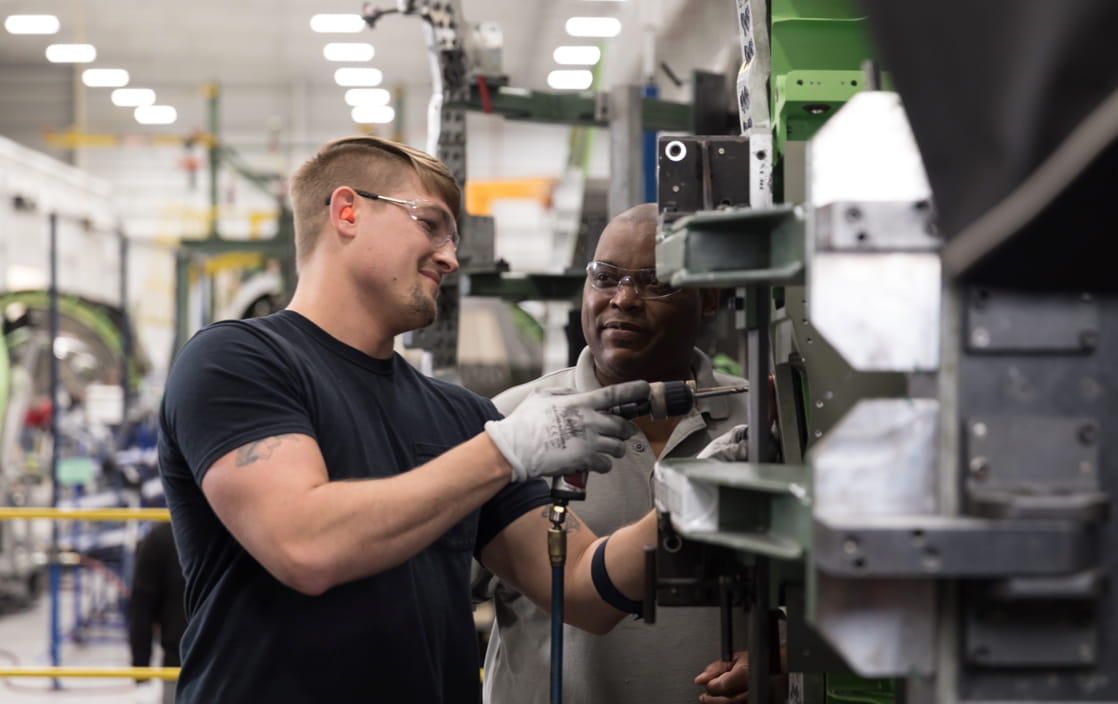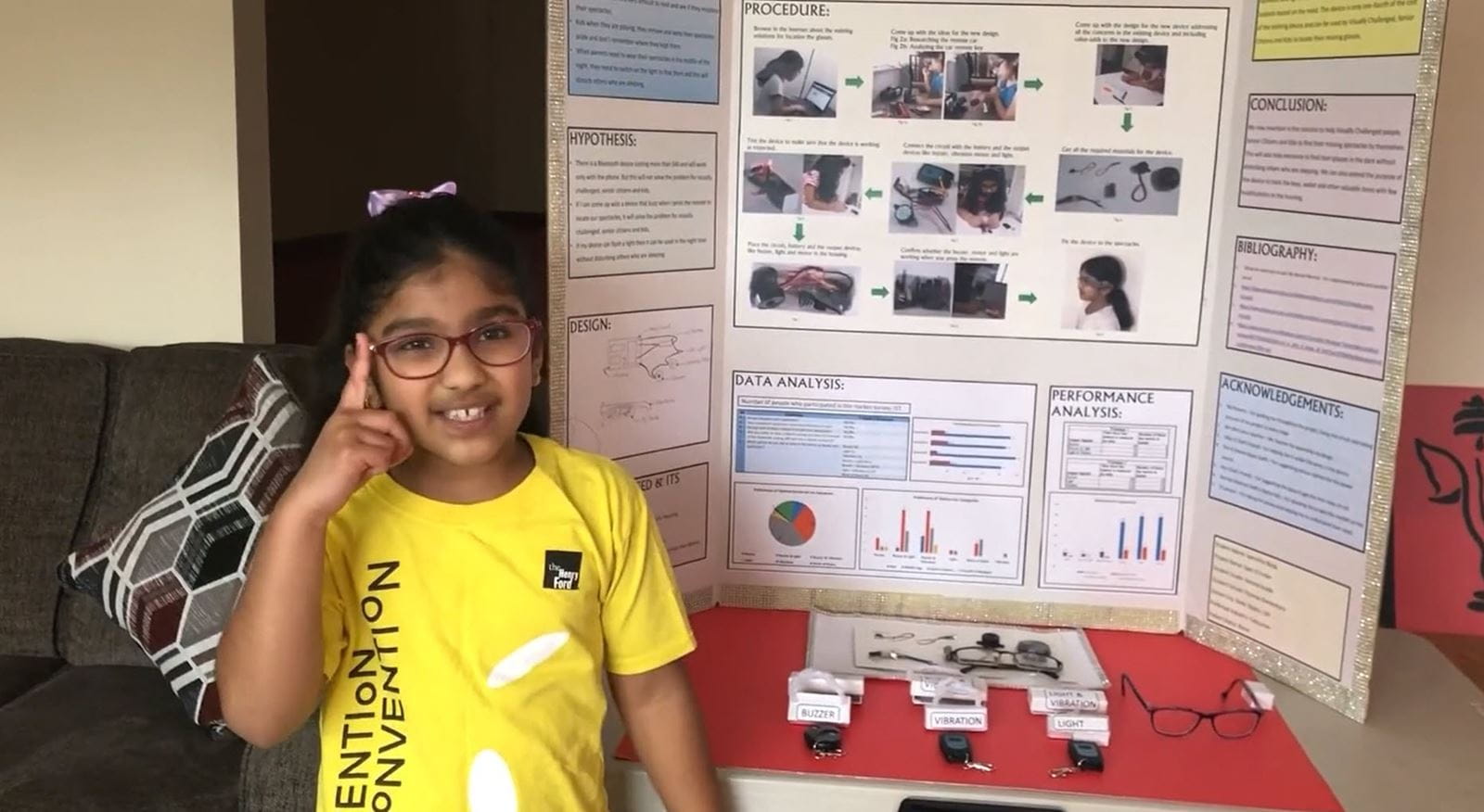Why the Invention Convention shows there’s hope for the future
In video pitches, kid inventors show ingenuity, innovation and heart

Third-grader Samrithy Balaji demonstrates SpecX Finder, her entry in the 2020 Invention Convention, sponsored by Raytheon Technologies. She was among nearly 500 inventors who participated in the U.S. nationals round, which was held virtually.
Everyone could use a little optimism these days. Well, we just found some.
In June 2020, 250 employee volunteers from Raytheon Technologies served as judges at the U.S. nationals round of the Invention Convention, an annual event where kids from kindergarten through 12th grade design, build and demonstrate products to solve problems they’ve encountered in their own lives. About 500 inventors competed virtually at this year’s nationals, coming from a field of more than 120,000 students who participated in local competitions. The winners of the 2020 competition, sponsored by Raytheon Technologies, were announced July 2.
Sure, it’s cute and the kids are precocious, but there’s more to the Invention Convention than that: It’s a glimpse into the thought process, creativity and ambition of the very people who will shape the world in a decade or two (and, in some cases, much sooner than that).
“The skills students develop through Invention Convention are more critical now than ever before,” said Patricia Mooradian, president and CEO of The Henry Ford, which runs the event. “The world needs more problem-solvers and as we’ve seen through all of the participants, our students are ready to rise to the challenge. We look forward to celebrating all of their hard work and providing them with the much-needed exposure and mentorship to take their ideas to the next level.”
From what we saw, they’re off to an awfully good start. Here are some entries that caught our judges’ eyes, what they say about the kids who take part, and why that should leave us all feeling a little better about the future.
They want to save your life.
When eighth-grader Ana-Lois Davis’ grandfather went into cardiac arrest, it was up to her grandmother to perform CPR until help arrived. With that harrowing experience in mind, she wanted to develop something to help people remember how to do CPR under duress — and to assure them they were doing it right.
So she programmed a few circuit boards and rigged up some pressure sensors, LEDs and a buzzer. The result was the CPR Smart Gloves. They cue the user on when to perform chest compressions, and the lights indicate whether they applied the right amount of pressure.
“My goal is that the CPR gloves will help change the way people remember CPR, and change the world by saving those in need … because every second counts,” she said.
They’re inventing with empathy.
Many entries came from students who were trying to solve a problem that has happened to them. Twelfth-grader Gianna Guzzo wanted to solve a problem that was happening to other people.
When she saw news reports about children being left in cars, her thoughts went immediately to her young cousins, the children she babysits, and their harried parents.
“To think that a simple slip of mind would be fatal to any one of these children was concerning for me,” she said. “I wanted to see if there was a solution out there, or if I could create one in order to protect children like them.”
Her solution: Vital Guard, a Bluetooth-enabled network of sensors that reminds parents to take their children out of the car, but also monitor a child’s heart rate and respiration rate right from the car seat and notify the parent via an app when those vital signs start looking abnormal.
Her invention won the competition’s Raytheon Technologies Aerospace Award, because her concept could easily be adapted to monitor the vital signs of pilots and passengers.
The other Raytheon Technologies award winners, all of whom will receive scholarships:
- Most innovative: Twelfth-grader Anirudh Cowlagi, who came up with a way to analyze massive amounts of data to find, identify and characterize minor planets. The award goes to an inventor “who has developed a new and novel technical solution to a real world problem that could logically be brought to market.” In addition to the scholarship, he will also take part in a Raytheon Technologies mentorship program;
- Connectivity: Siddhant Bhardwaj, a ninth-grader who built a sensor device to help visually impaired people move about without a cane or other assistance. That award goes to inventions “that help bring people together, advance person-to-person communications, and/or inventions whose innovative nature are derived from the bringing together of disparate elements.”
They’re making medical treatments less scary.
Maya DiMauro, a fifth grader, has an autoimmune condition that requires IV treatments. Those treatments are uncomfortable — the board they give you to keep your arm straight is hard, and the plastic sticks to your skin. You can use a pillow, but that usually ends up being too bulky.
So she combined them and came up with SurvIVe, a soft, breathable armband that keeps your arm straight comfortably. Kid bonus: It has a Velcro strip where you can stick a small stuffed animal.
And it comes in calming blue and green.
“SurvIVe has the potential to help so many pediatric and adult patients,” she said, calling it “a little piece of comfort that can help patients through a very scary time in their lives.”
They want to help you fix your mobile device.
Of all the minor frustrations in the world, there’s only one worse than when your mobile device malfunctions: Figuring out how to fix it.
Internet forums can be helpful — if you find the right one. And when it comes to finding the right one, you have no better friend in the world than eighth-grader Griffin Li. He developed a web app that uses machine learning and natural language processing to read troubleshooting forums, then show the solutions that received the best responses. His idea came from the time he found that his iCloud was full, even though he had nothing stored on it.
“When I Googled it, I found a forum and found 57 posts, which I had to read through, analyze and finally decide on the best solution,” he said in his entry. “I wanted to create a better way.”
Seeing students take so easily to the virtual competition was “heartening,” said Randy Bumps, Raytheon Technologies’ executive director of corporate social responsibility. “We hope that our support of programs like Invention Convention will continue to encourage student problem-solving, next-generation innovations and a passion for lifelong learning.”


